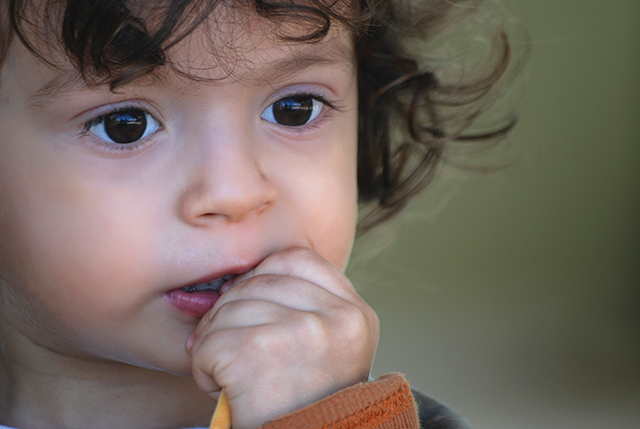Parents do not uproot their children to make a long and dangerous journey to an unknown future in the U.S. unless situations in their home country are so threatening that the risks of migration pale in comparison to more certain risks at home. Parents do it because they feel they must!
Zero To Three is one of many organizations feeling compelled to respond to young children being separated from their parents at the U.S. Border. In a recent statement:
“The secure attachments young children form to their caregivers are the bedrock of healthy development and emotional stability, providing a sense of security and a buffer from the toxic effects of stress and trauma. Migrating to a new country is already stressful.
Separating children and caregivers destroys the relationships that foster resilience. Make no mistake: separation at this point is a trauma that can have long-term impacts on an infant’s well-being.
Post-traumatic stress disorder, anxiety, depression, and sleep disorders can follow.
The practice of having border agents remove children from caregivers suddenly and place them institutional care, especially without any policy for visitation, or reunification, amounts to maltreatment.
Anyone with infant/early childhood mental health expertise – and anyone with a heart for children – will tell you that separating young children from caregivers at the U.S. border is appalling and must be stopped”
– Myra Jones Taylor, chief policy officer
ZERO to THREE
As immigration enforcement ramps up, so increases the fear of undocumented parents about the fate of their children. There are about 6 million U.S. citizen children with at least one parent who is in the country illegally. Research shows that harsh immigration enforcement policies have consistently undermined the health, economic security, and overall wellbeing of children of immigrant families.
Specifically, the current administration’s immigration enforcement orders:
- Tear families apart
- Harm children’s short- and long-term mental health
- Undermine children’s economic security
- Threaten children’s access to education and basic needs
- Endanger the lives of asylum-seeking children and families
Last year, the current administration issued two executive orders that powerfully expanded the intensity and scope of federal immigration enforcement activities in the United States. These orders have included policy changes that have negative consequences for children living in mixed-status immigrant families. Many of these children are U.S. citizens. This policy enforcement has dire consequences for unaccompanied children seeking protection here.
The current administration’s orders call for:
- An increase in immigration enforcement activities for deportation, triples the number of immigration agents,
- Increased collaboration between federal Immigration and Customs Enforcement (ICE) and local law enforcement agencies to detain undocumented immigrants,
- Focus on immigration enforcement along the U.S. southern border,
- Significant expansion of immigration detention capacity.
Additionally, the current orders have resulted in the separation of at least 2300 undocumented children from their parents who are placed in governmental care in shelters and foster homes across the United States. At the time of this writing, few have been reunited despite judicial mandates.
Parents who come to the U.S. have to make very difficult decisions about whether or not to bring their children with them to a new country that is unknown to them.
There are policy changes that would return more migrants, including women and children seeking asylum, back into harm’s way and strip children of critical protections. These orders and policies undermine the wellbeing and development of millions of children and are directly linked to the parent-child relationship, external stress factors, and family economic security.
Parts of these orders may face legal challenges and other parts require additional funding to be fully implemented making these policies not final.
Significant effects of current immigration enforcement orders:
1st – Immigration enforcement orders tear families apart and mixed-status families are now more likely to be separated by deportation because every undocumented immigrant is being seen as a priority for removal and quickly processed with deportation orders. The “official guidelines for implementing the orders” rolls back previous Department of Homeland Security (DHS) policy that gave immigration officials discretion in deciding whether to detain certain immigrants, including parents and legal guardians of minor children.
More than 5 million children in the United States live with at least one undocumented parent and 4.1 million of them are U.S. born citizens.
As a result of these official guidelines, children are at risk for having a parent or guardian deported.
The current administration has called for national raids which have captured hundreds of people (parents and young people) previously covered by the Deferred Action for Childhood Arrivals (DACA) program which was established in 2012 giving relief from deportation for undocumented youth who came to the U.S. as children.
Family separation is one of the most harmful effects of the current administration policies. As we know, parents are extremely important to the wellbeing of their children and the sudden loss of a parent can have long-term consequences.
2nd – Immigration enforcement orders harm children’s short and long term mental health by increasing children’s anxiety about their undocumented parents. At very young ages, children are impacted significantly by parent stress, according to many studies. High levels of parental stress can result in poor cognitive development in children as young as two years of age. Persistent stress, also known as “toxic stress”, can have harmful effects on brain development in very young children affected by fear and worries of their family and community, and the trauma of watching a parent be arrested can result in behavioral changes. Very young children are particularly vulnerable to the impact of toxic stress due to the rapid brain development taking place, as well as their dependence upon familiar, caring adults to assist in regulation of their state of arousal. The social and emotional development that takes place during the earliest years will impact later functioning for years to come.
Children of all ages are affected by fear and worries of their family and community, and the trauma of watching a parent be arrested can result in behavioral changes. Children’s sleeping habits often suffer and increased anger or withdrawal is common. Schoolwork can suffer. Additionally, the remaining parent may experience depression and withdrawal. Mixed-status families involved in immigration enforcement often lack access to mental health services that are affordable and culturally and linguistically appropriate.
3rd – Immigration enforcement orders can undermine children’s economic security. Parental deportation or risk of parental deportation can push children in low-income immigrant families further into poverty. One study estimates that the sudden loss of a deported parent’s salary can reduce a family’s household income by 73 percent. Poverty faced by children in mixed-status families results in barriers to basic health and nutrition supports available to non-mixed status families. We know that children living in low-income households when compared to same age peers often experience more hunger, decreased health outcomes, and increased learning disabilities and developmental delays. Poverty faced by children in mixed-status families results in barriers to basic health and nutrition supports. Additionally, poverty causes extreme stress on parents, affecting their ability to recognize cues and attend to their children.
4th – Immigration enforcement orders threaten children’s access to education and basic needs. The fear of deportation can cause parents to be reluctant to send their children to child care, school or after school activities. Every day parental responsibilities – transporting children to and from school or childcare – become too risky for undocumented parents. A routine traffic stop could result in deportation. Anti-immigrant rhetoric increases parent fears to reach out for a variety of supports for themselves and their young children. There are also concerns for schools, early childhood education and care programs, health clinics and other programs that serve immigrant children and their families regarding confidentiality. Current ICE policy restricts immigration enforcements from occurring in “sensitive locations” like schools, child care centers, bus stops, hospitals, and places of worship. Yet, we know of incidents where parents have been taken into custody at these locations. There is a need to review policies and to provide protocols to ensure the safety of all children and families.
5th – Immigration enforcement orders endanger the lives of asylum-seeking children and families.
These are the children and families that have experienced significant trauma in their migration from their home countries: families primarily from Central America trying to escape violence and instability in their home countries because of drug trafficking, gangs, and organized crime.
When border patrol agents turn away migrants at the border, forcing them to wait for outcomes outside the United States, their children are exposed and vulnerable to trafficking, and young children are being recruited for gangs. Policy guidelines need to define who qualifies as an “unaccompanied child” and to provide protections for these children. The Federal government requires women and children to be placed in detention centers – a controversial practice that has been shown to be detrimental to children’s healthy development. This is being challenged in court.
These are not the values of America. This policy enforcement is dangerous to the health of our most vulnerable children. Separating families sends children deeper into poverty and jeopardizes their rights to basic human protection. Current immigration policies and practice go against MI-AIMH’s mission to promote safe lives and healthy social emotional development for all very young children.
“MI-AIMH believes that each infant needs to be nurtured and protected by one or more consistent and stimulating caregivers who enjoy a permanent and special relationship with the baby. This relationship is essential for optimal social, emotional and cognitive growth. MI-AIMH also believes that the failure to provide and maintain nurturing relationships, at least one, during infancy may result in significant damage to the individual and to society.”
Infant and early childhood mental health specialists understand what is at stake and it is critical that we advocate for practices that protect and support the healthy development of every young child.
References:
Cervantes, Wendy, & Walker, Christine (2017) Five Reasons Trump’s Immigration Orders Harm Children. Center for Law And Social Policy, April 2017 1-8. mi.aimh.org
Njoroge, Wanjiku F. M. (2015) Complex Intervention: A Family’s Story of Loss, Struggle, and Perseverance. Zero To Three Journal, March 53-56.
Paris, Ruth, & Bronson, Marybeth. (2006) A Home-Based Intervention for Immigrant and Refugee Trauma Survivors: Paraprofessionals Working With High-Risk Mothers and Infants. Zero To Three Journal, November 37-45.
Prieto, H. Victoria. (2017) Considerations for Serving Immigrant Families With Young Children. Zero To Three Resource for Professionals.
Zayas, Luis H. (2018) Immigration Enforcement Practices Harm Refugee Children and Citizen-Children. Zero To Three Journal, 38(3) 20-25.







